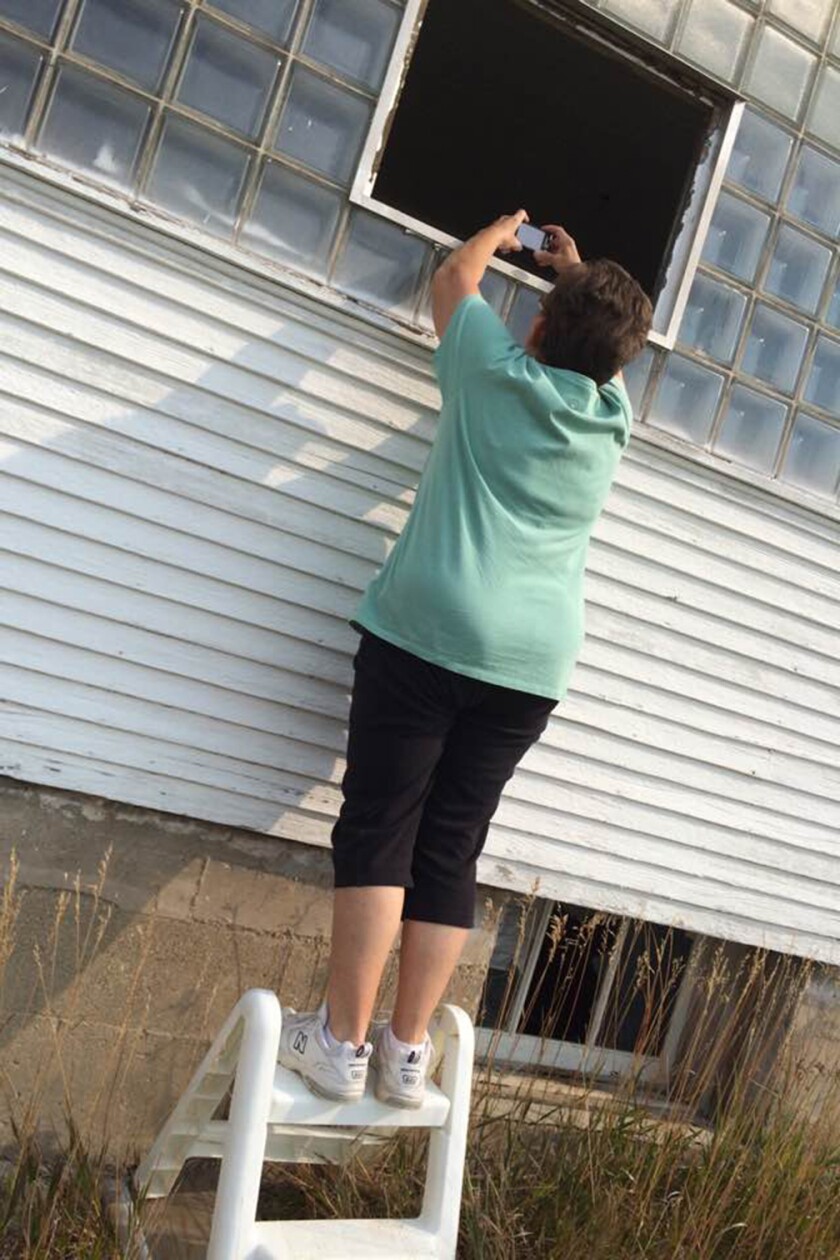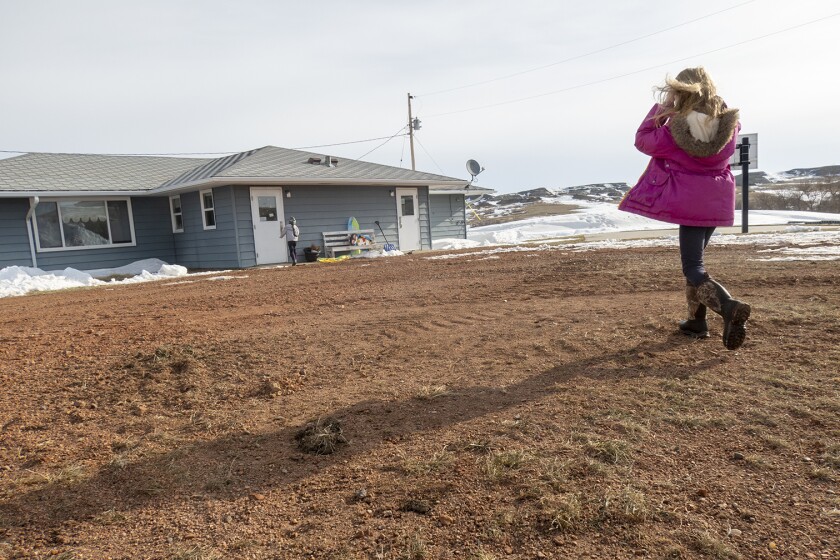
(Photographs by David Kidd/Governing)
A century ago, half of the children in North Dakota attended one of the state’s 4,500 small country schools. Besides being places of learning, the buildings often served as hubs of community activity for isolated populations. They were often spaced not more than a few miles apart, so that students on foot or horseback could get to them in a reasonable amount of time.
By the early years of the 20th century, the state was already advocating for improvements to its country schools. A 1904 pamphlet issued by the Department of Public Instruction bemoaned the circumstances in which rural students and teachers worked, identifying numerous shortcomings present in many of the makeshift buildings. “Most of our schoolhouses are built in utter defiance of all accepted laws of heating, ventilating and lighting,” it said.

But education reformers of the time were interested in more than uniform building codes. Many thought that children attending small country schools were not as well educated as their peers at larger schools. Proponents of consolidation cited higher per-pupil costs, lower graduation rates and underqualified and undertrained teachers as justification for abandoning one-room schools. The result: decadeslong consolidation of districts, combined with an ongoing population shift away from rural areas, hastening their demise. By 1961, just 817 one-room schools were still in use in North Dakota. Today, only five remain in operation.

The School Lady Finds Her Calling
Preternaturally cheerful, Kathy Wilner speaks in a rapid Midwestern clip. Nearly every other sentence contains at least one “golly,” “dang it” or “Oh my gosh!” Everything is “so much fun” and “just a blast!” Of the 721 schools she has documented, she is sure she can still describe hundreds of them from memory.
Kathy’s involvement with country schools took root in 2008. Recently retired and with a lifelong interest in family history, she was recruited to help plan the 125th anniversary celebration of a one-room school with ties to her family. Her great grandfather had donated the land and served on the school's first board. Her grandfather was one of its students. “That school has been kind of big in our lives,” she says.

Searching for Survivors
Initially, Kathy stuck close to home, making day trips, with maps in her lap, behind the wheel of her Oldsmobile Alero. She traveled alone. “My husband doesn't really think this is the most fun thing in the world to do,” she says. Out on the roads of rural North Dakota, Kathy was enjoying her newfound passion in life. “I found all these schools and I just couldn't quit,” she says. “I never drove by a school I didn't stop at.” But it isn’t enough to simply locate a school for the state database. It is just as important to record details about the structure: its construction, condition, the materials used and architectural details.

Encounters with birds, mice, snakes, bugs and barbed wire are inevitable when trudging around fields in the summer. “I don’t like ticks,” Kathy says. “But you know what? I would have never done this project if I hadn't gotten over ticks.” In more than a dozen years, she has never touched poison ivy or stepped on a nail. But she has not escaped entirely unscathed.

As she ventured further from home, Kathy came to rely on locals to show her around. “I would call people and say, ‘If I come, will you get in my car and ride with me?’” More often than not, they did. Her husband once questioned her plans to meet up with a farmer in another county. “‘Aren’t you worried about meeting a man in the middle of nowhere?’ And I said, ‘No, I'm in North Dakota.’”


Road Tripper
Over 12 years, Kathy guesses she has driven at least 20,000 miles in pursuit of country schools, first in her Oldsmobile, and later in a ‘97 Chrysler. “It was like a huge boat,” she says of the second car. “Leather interior, sunroof, the whole nine yards.” The Chrysler belonged to her mother, who, well into her 90s, crisscrossed the state with Kathy on at least 20 of her trips, acting as note taker and keeping her company. “We were a good team,” she says.
Kathy was also occasionally joined by her friend Karen, from Minnesota, who shares her enthusiasm for road trips. With Karen at the wheel, Kathy could concentrate on map reading and writing down her observations between stops. “I should have done that years ago,” she says. “It would have been way easier.” Travel costs were initially offset with a few thousand dollars in grant money, but for the last few years, Kathy has pretty much paid her own way. “Whatever I have done since 2016 came out of my own pocket.”

A Moving Target
There is no way to know how many one-room schools still exist in North Dakota. Many of them have been moved from their original locations onto private property, often repurposed as granaries, guest houses and museums. The schools that are left untouched will eventually collapse or be burned and bulldozed to make more room for crops.
Just a few miles from where Kathy lives, a young couple moved a schoolhouse onto their property to prevent it from being burned. “The farmer wanted more space for his cows,” Kathy says. “It's like, ‘Gosh, you guys. Don't you understand history?’”

Kathy Wilner is lately insisting that her days on the road in search of undiscovered schools are over. “My school project is really winding down," she says. “I won't travel anymore. I am really going to miss all those dusty gravel roads!” But she hopes to keep hearing from others in the field who need her help in cataloging their discoveries. Amy Bleier, an archaeologist with the State Historical Society, has heard it all before. “She keeps saying she's done. But she's not. She's been saying that for years.”
“Oh, gosh,” says the School Lady. “I'm never going to be done!”

(courtesy Kathy Wilner)











